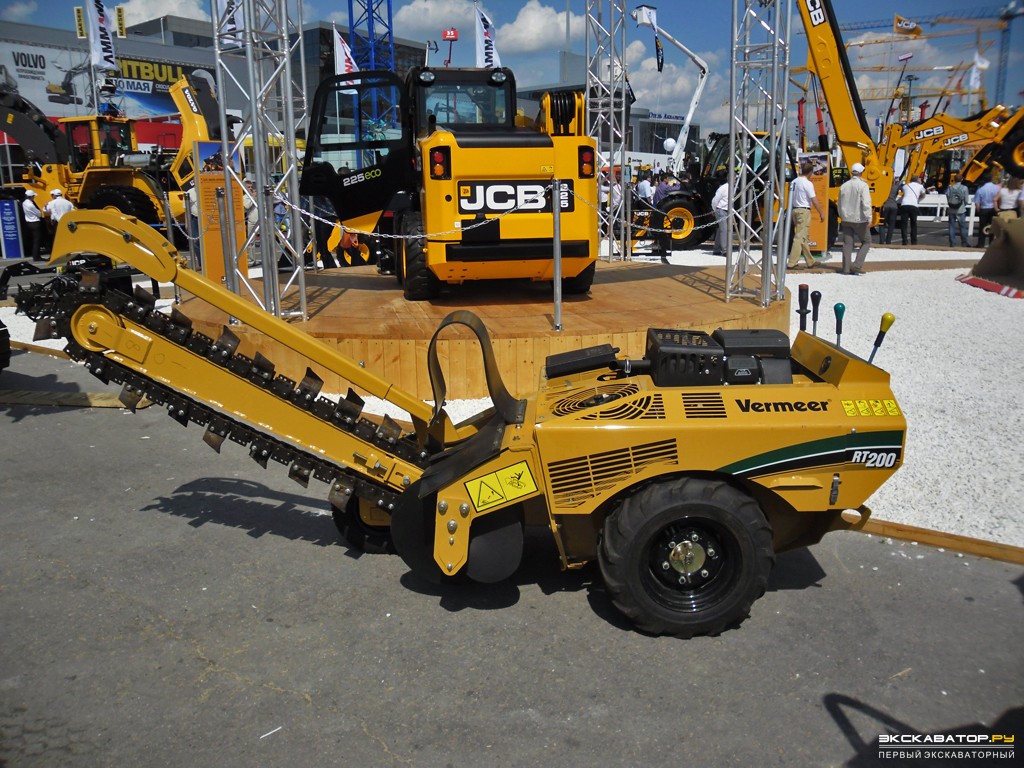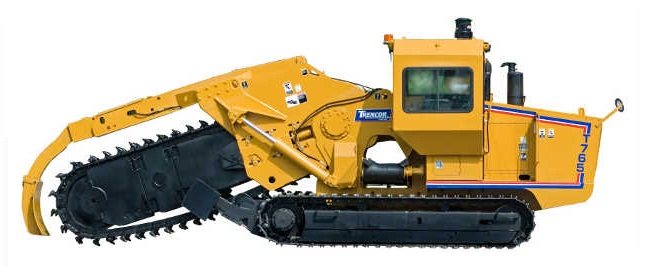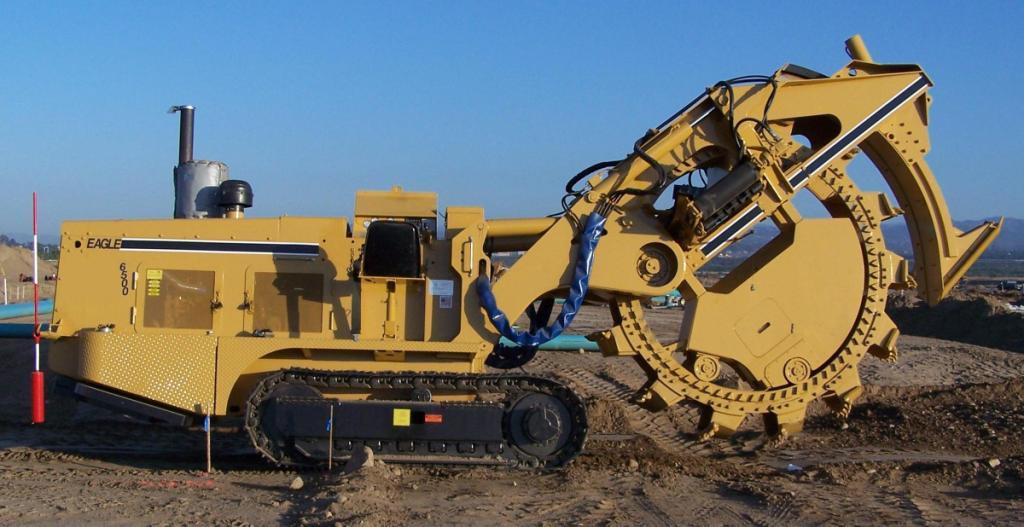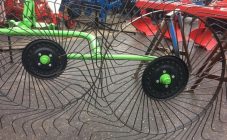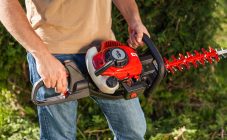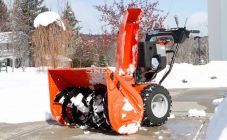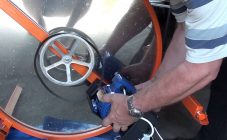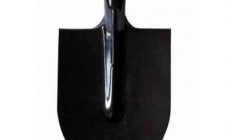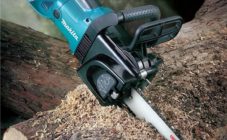A trencher (trench excavator) is a specialized construction machine used in earthworks for digging trenches for laying utilities. Digging with such an excavator allows you to get a straight line of a given depth of a ditch in a shorter time than it would have been dug manually. The widespread use of such machines in modern construction, road works is due to their high performance, design features, a variety of types and manufacturers.
Application area
Trench excavators are multifunctional machines used in various fields. Currently, they are actively used for such types of work as:
- Digging open trenches for the laying of engineering communications (water and gas pipelines, sewerage, power cables, communication lines) in an open way;
- Digging of narrow and long ditches to fill long strip foundations;
- Outlining the flat contours of construction pits and quarries on the ground by digging straight trenches of shallow depth;
- Loosening of the upper compacted layer of soil during agricultural work (when laying an orchard, nursery);
- Removing the roadway when repairing existing communications or laying new ones, installing wells, replacing old asphalt with tiles on sidewalks;
- Digging trenches for laying a closed drainage system in waterlogged areas;
- Digging ditches of open drainage and irrigation systems. In addition to a trench excavator, a machine such as a trencher with a passive (plow, blade) or active (cutter, chain, rotor, auger) working body is also used for this.
- Cutting blocks and works on the development of layers of such rocks as limestone, sandstone;
- Cutting out a block of land with the root system of an adult tree when transplanting it to another place;
- It is also often used as a slot-cutter cultivator to prevent water erosion of soils on steep slopes. At the same time, longitudinal slots are cut across the slope, which, absorbing excess flowing moisture, prevent mechanical washout of the fertile soil layer.
Design features
In the design of any type of trench excavator, there are such basic elements as:
- Tractor (chassis) - a tractor (wheeled or tracked), mini-tractor, walk-behind tractor or excavator that sets the working body of the machine in motion and ensures its straight-line movement when digging a trench. For the controls of the tractor and the working body of the excavator, a glazed cabin or a hinged canopy serves;
- Rotary or chain cutting tool, designed for excavation and formation of a trench of a certain depth, width and shape of the cross section;
- The dumping device (side auger or belt conveyor) provides for the discarding or loading onto the vehicle of the soil removed by the working bodies of the machine from the trench they dig;
- Hydraulic cylinders and rods that provide lifting and lowering of the working body of the machine when digging a trench and fixing it in a safe position when moving the excavator on the road.
Types of trenchers
Depending on the design of the working body used and the method of excavation from the trench it dug, there are such types of trenchers as chain, rotary, caterpillar, manual.
Chain
A chain trench excavator (bar trencher, or bar installation) is a very common type of machine in modern road and construction work. The working body of such a trencher consists of:
- Tire (frame) - a rectangular frame made of strong and solid metal, which serves to stiffen the structure;
- Two asterisks - tension and wire. The first is located at the end of the bar and is designed to tighten the chain, the second is installed on the shaft of the reduction gear and serves to drive the chain.
- Chain - one, - or two-row movable structure connected in a ring, consisting of separate fists (links) with cutters ("teeth") or scrapers (blades) inserted into their nests. Both the chain itself and its cutting tools are made of high quality alloy steel. Special solders from high-strength alloys are made on the blades and cutters directly involved in excavation.
- Side auger for discarding soil excavated by the soil chain;
- "Shoe" - a device located on the tire of the working body and designed to clean the chain from damp earth adhering to it.
- The chain is driven by a reduction gear mounted on the tractor.
- To adjust the depth of the cut trench, as well as to raise the bar working body to a safe position for transportation, a single hydraulic cylinder is used, powered by the tractor hydraulic system.
Such machines are capable of digging trenches up to 5-6 m deep, 0.14 m wide.
In a wide variety of models of these machines, the following are most popular:
- Trencher TsTK-160 Azov StroyMashplus;
- Trencher vermeer T558 COMMANDER 3.
Rotary
Rotary trenchers are machines used in road construction, utility lines and the mining industry.
The main components of a trailed mounted or semi-trailed working body of such a machine are:
- Frame - a structure on which the rotor with cutting working elements, hydrostatic drive, protective casing are mounted. The frame is connected to the tractor using powerful hydraulic cylinders.
- A rotating wheel (rotor) - is a frame or all-metal disc, on the rim of which working cutting elements made of durable alloy steel (scrapers, teeth, buckets) are installed;
- Protective cover - covers the rotor from the side of the tractor and prevents stones and solid rocks flying out from under it from entering the glass of the machine's cabin or into a nearby worker;
- Hydrostatic drive - a mechanism powered by a powerful pump or the tractor's hydraulic system and driving the rotor of the machine;
- Hydraulic cylinders - designed to deepen the rotor when digging a trench to the required depth;
- The trailed rotary trencher models also have a rear support wheel for setting the required digging depth and transporting the machine on public roads.
Such machines are capable of digging wide (up to 2.5 m) trenches up to 3 meters deep. Possessing greater productivity, in comparison with chain ones, they have one significant drawback: massiveness and large dimensions of the structure. This complicates their movement or transportation to the place of work, thereby leading to an increase in the cost of digging a trench.
Tracked
Among the trenchers, these machines, mounted on heavy tracked tractors and having a rotary or chain type of working body, differ in such advantages as:
- High permeability and adhesion to the ground;
- Large power, reaching 1000-1500 hp;
- Possibility of positioning the frame and the working body of the excavator, both in an inclined and in a vertical position. This increases the depth of digging the trench, allowing the machine to be used in steep, hilly terrain.
Manual
The manual trencher is a convenient and compact tool for a summer residence, a private house. The simplest small-sized manual trencher consists of a gasoline single-cylinder internal combustion engine and a chain (bar) working body. More powerful and productive models of this tool are attachments for a walk-behind tractor, a motor-cultivator (a trencher in the form of a cutter), as well as self-propelled units (a ditch witch R300 trencher).
Such a mini trencher is used when digging shallow (up to 1 meter) and narrow trenches for laying cables, sewerage and water supply.
The most popular models of hand trenchers among summer residents and gardeners are:
- TKMG-1200 (small-sized manual trencher);
- Small trencher sable T / BS / 70;
- Barreto 912HM;
- Laski TR50 / CH270 / 50;
- Ground Hog T4.
Leading trencher manufacturers
The most famous manufacturers of trenching machines are:
- Caterpillar;
- Vermeer Manufacturing Company;
- Case Corporation;
- LLC Raditskiy Machine-Building Plant;
- DGUP "Dmitrovsky Excavator Plant";
- JSC "Mikhnevsky Mechanical Repair Plant";
- AzovStroyMash Plus LLC;
- The Charles Machine Works, Inc. (manufactures machines and equipment under the brand name "Ditch Witch");
- "SABLE professional".
Thus, a trencher (powerful for production needs or a simple hinged one for a walk-behind tractor) is a convenient machine that greatly simplifies the process of digging trenches for laying communications. A variety of types and models of trenchers allows you to choose the one suitable for certain jobs and volumes, both for the owner of a large construction company and for a simple gardener or summer resident.
